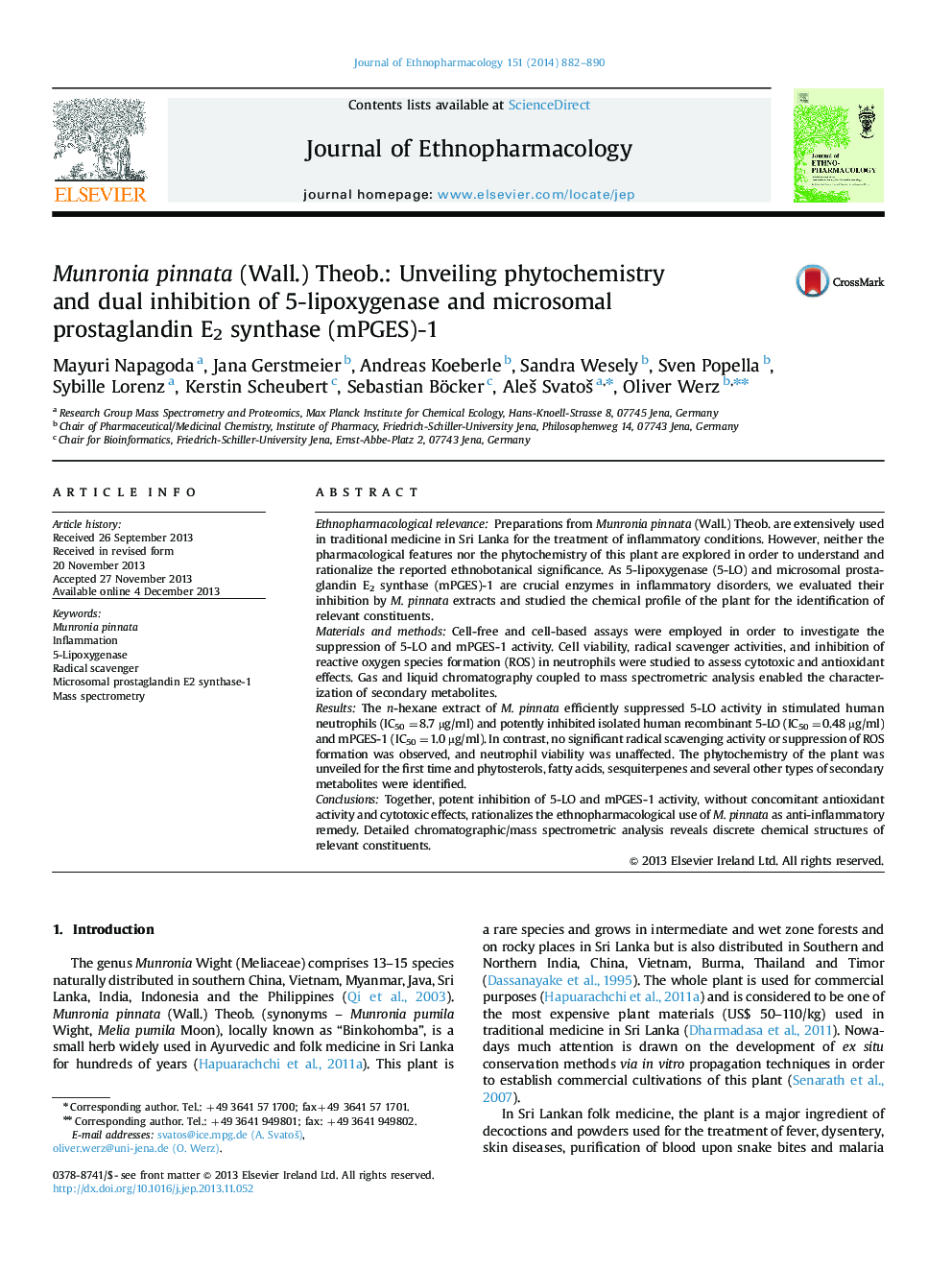| کد مقاله | کد نشریه | سال انتشار | مقاله انگلیسی | نسخه تمام متن |
|---|---|---|---|---|
| 2545293 | 1123945 | 2014 | 9 صفحه PDF | دانلود رایگان |

Ethnopharmacological relevancePreparations from Munronia pinnata (Wall.) Theob. are extensively used in traditional medicine in Sri Lanka for the treatment of inflammatory conditions. However, neither the pharmacological features nor the phytochemistry of this plant are explored in order to understand and rationalize the reported ethnobotanical significance. As 5-lipoxygenase (5-LO) and microsomal prostaglandin E2 synthase (mPGES)-1 are crucial enzymes in inflammatory disorders, we evaluated their inhibition by M. pinnata extracts and studied the chemical profile of the plant for the identification of relevant constituents.Materials and methodsCell-free and cell-based assays were employed in order to investigate the suppression of 5-LO and mPGES-1 activity. Cell viability, radical scavenger activities, and inhibition of reactive oxygen species formation (ROS) in neutrophils were studied to assess cytotoxic and antioxidant effects. Gas and liquid chromatography coupled to mass spectrometric analysis enabled the characterization of secondary metabolites.ResultsThe n-hexane extract of M. pinnata efficiently suppressed 5-LO activity in stimulated human neutrophils (IC50 =8.7 µg/ml) and potently inhibited isolated human recombinant 5-LO (IC50 =0.48 µg/ml) and mPGES-1 (IC50 =1.0 µg/ml). In contrast, no significant radical scavenging activity or suppression of ROS formation was observed, and neutrophil viability was unaffected. The phytochemistry of the plant was unveiled for the first time and phytosterols, fatty acids, sesquiterpenes and several other types of secondary metabolites were identified.ConclusionsTogether, potent inhibition of 5-LO and mPGES-1 activity, without concomitant antioxidant activity and cytotoxic effects, rationalizes the ethnopharmacological use of M. pinnata as anti-inflammatory remedy. Detailed chromatographic/mass spectrometric analysis reveals discrete chemical structures of relevant constituents.
Figure optionsDownload high-quality image (220 K)Download as PowerPoint slide
Journal: Journal of Ethnopharmacology - Volume 151, Issue 2, 3 February 2014, Pages 882–890